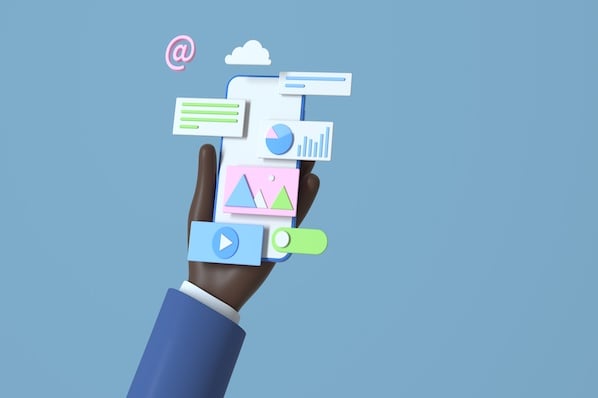What is Marketing Myopia? Avoid pitfalls with customer focus. Learn from Kodak, Nokia failures!
- Ashish Sandhu
- 0 Comments
Introduction to Marketing Myopia
Understanding the Concept

Marketing Myopia is a term coined by Theodore Levitt in 1960, focusing on the shortsightedness of some companies in defining their business. This concept highlights how businesses often prioritize their products and services over understanding the needs and demands of their customers.
The Role of Customer-Centric Approach
Companies that fall victim to marketing myopia tend to lose sight of the evolving market trends and fail to adapt their strategies accordingly. By shifting focus towards a customer-centric approach, businesses can ensure long-term sustainability and growth.
Exploring Market Trends
In the fast-paced business environment, it is essential for organizations to continuously monitor market trends, consumer behaviors, and technological advancements to stay relevant and competitive.
Implications for Business Success

Marketing myopia can have detrimental effects on a company’s success, leading to loss of market share, reduced customer loyalty, and missed growth opportunities. By neglecting to understand the changing needs and preferences of consumers, businesses risk becoming obsolete in today’s dynamic marketplace.
Importance of Long-Term Vision
Businesses must cultivate a long-term vision that prioritizes customer satisfaction and anticipates market shifts. By aligning their strategies with consumer needs, companies can drive innovation, foster customer loyalty, and achieve sustainable growth.
| Issue | Impact |
|---|---|
| Lack of Customer-Centric Focus | Decreased customer satisfaction and loyalty |
| Failure to Adapt to Market Changes | Missed growth opportunities and competitive threats |
Addressing Marketing Myopia
Recognizing the signs of marketing myopia and proactively addressing underlying issues can help businesses realign their strategies and remain relevant in an ever-changing marketplace. By fostering a culture of continuous learning and adaptation, companies can avoid the pitfalls of shortsightedness and position themselves for long-term success.
Definition and Causes of Marketing Myopia
Defining Marketing Myopia

Marketing Myopia refers to the narrow focus of companies on their products and services, overlooking the broader market perspectives and customer needs. This tunnel vision approach inhibits organizations from adapting to changing consumer demands and industry trends, ultimately impacting their long-term growth and success.
The Root Causes
Understanding the causes of marketing myopia is critical in addressing and preventing its detrimental effects on businesses. Several key factors contribute to the development of this short-sighted marketing approach.
Lack of Customer-Centricity
One of the primary causes of marketing myopia is a company’s failure to prioritize customer needs and preferences. When businesses become internally focused on their offerings without considering the evolving expectations of their target audience, they risk losing relevance in the market.
Short-Term Goals vs. Long-Term Vision

Companies may fall into the trap of marketing myopia by prioritizing short-term sales and profits over long-term sustainable growth. By neglecting to invest in understanding market dynamics and consumer behavior, organizations limit their ability to innovate and adapt to changing market conditions.
Risks of Complacency
A complacent attitude towards market research and a reluctance to embrace change can lead to the development of marketing myopia. Businesses that fail to stay ahead of industry trends and consumer preferences may find themselves lagging behind more agile competitors.
| Cause of Marketing Myopia | Impact on Business |
|---|---|
| Lack of Customer-Centricity | Decreased customer loyalty and market relevance |
| Short-Term Goal Orientation | Missed opportunities for long-term growth and innovation |
| Complacency and Resistance to Change | Risk of becoming obsolete in a rapidly evolving market |
Preventing Marketing Myopia
By addressing the root causes of marketing myopia and fostering a culture of consumer-centricity and adaptability, businesses can mitigate the risks associated with shortsighted marketing strategies and position themselves for sustained success in a competitive marketplace.
Impact of Marketing Myopia on Businesses
Understanding the Consequences
The impact of marketing myopia on businesses can be profound, affecting various aspects of their operations and long-term sustainability. By failing to prioritize customer needs and adapt to changing market dynamics, organizations risk significant challenges that can hinder their growth and competitiveness.
Erosion of Customer Loyalty
One of the primary consequences of marketing myopia is the erosion of customer loyalty. When businesses focus solely on their products or services without considering the evolving needs and preferences of their target audience, they may fail to establish strong and enduring relationships with their customers.
Loss of Market Relevance
Marketing myopia can lead to a loss of market relevance as companies become disconnected from the evolving trends and demands of their target market. In a dynamic business environment where consumer preferences and industry landscapes evolve rapidly, failing to adapt can result in a diminished presence and impact in the market.
Financial Implications

Apart from the intangible impacts on customer relationships and market positioning, marketing myopia can also have financial implications for businesses. By neglecting to invest in market research, innovation, and customer-centric strategies, organizations risk missing out on revenue opportunities and sustainable growth.
Stagnation in Revenue Growth
Businesses that fall victim to marketing myopia may experience stagnation in their revenue growth as they fail to introduce new products or adapt their offerings to meet changing consumer demands. This lack of innovation and responsiveness to market trends can result in missed opportunities for revenue expansion.
| Impact of Marketing Myopia | Consequences |
|---|---|
| Erosion of Customer Loyalty | Weakened customer relationships and reduced repeat business |
| Loss of Market Relevance | Diminished brand presence and competitiveness in the market |
| Stagnation in Revenue Growth | Lack of revenue diversification and missed growth opportunities |
Addressing the Impact
To mitigate the adverse effects of marketing myopia on their businesses, organizations must prioritize customer-centric strategies, invest in market intelligence, and foster a culture of adaptability and innovation. By proactively addressing these challenges, companies can position themselves for sustained success and growth in a competitive business landscape.
Strategies to Avoid Marketing Myopia
Adopting Customer-Centric Approaches

To steer clear of marketing myopia, businesses must shift their focus towards customer-centric strategies that prioritize understanding and meeting the evolving needs and preferences of their target audience. By placing the customer at the center of their operations, organizations can build sustainable relationships and drive long-term growth.
Personalized Marketing
Tailoring marketing efforts to individual customer needs and preferences can enhance engagement and foster loyalty. By leveraging data analytics and customer insights, businesses can deliver personalized experiences that resonate with their target audience and differentiate their brand.
Continuous Market Research
Staying abreast of market trends, consumer behaviors, and competitive landscapes through continuous market research is essential in avoiding marketing myopia. By gathering and analyzing data on changing market dynamics, businesses can make informed decisions and adapt their strategies to meet the evolving demands of their customers.
Prioritizing Innovation and Adaptability
Innovation and adaptability are key components of successful long-term growth strategies that can help businesses avoid falling into the trap of marketing myopia. By fostering a culture of innovation and encouraging experimentation, organizations can stay ahead of evolving market trends and drive sustainable growth.
Agile Decision-Making
Agile decision-making processes enable businesses to respond quickly to changing market conditions and consumer preferences. By empowering teams to make data-driven decisions and experiment with new ideas, organizations can adapt their strategies in real-time and avoid being blindsided by shifts in the market.
| Strategies to Avoid Marketing Myopia | Key Components |
|---|---|
| Adopting Customer-Centric Approaches | Personalized Marketing, Continuous Market Research |
| Prioritizing Innovation and Adaptability | Agile Decision-Making, Embracing Change |
Cultivating a Culture of Learning
Encouraging ongoing learning and professional development within the organization can foster innovation, creativity, and adaptability. By investing in employee training and skill development, businesses can equip their teams with the tools and knowledge needed to navigate changing market landscapes and avoid the pitfalls of marketing myopia.
Case Studies of Companies Affected by Marketing Myopia
Understanding Real-World Examples
Examining case studies of companies that have been impacted by marketing myopia provides valuable insights into the consequences of shortsighted marketing strategies and the importance of adaptability in today’s fast-paced business environment.
Kodak: The Digital Revolution
Kodak, once a dominant player in the film and photography industry, failed to anticipate the digital revolution. By focusing on film-based products and neglecting the emerging digital camera market, Kodak lost its market share and relevance, ultimately filing for bankruptcy in 2012.
Nokia: Missed Opportunities in Smartphones
Nokia, a leading mobile phone manufacturer, struggled to adapt to the smartphone era. Despite its early success in the mobile phone market, Nokia’s slow response to changing consumer preferences and the rise of touchscreen smartphones led to a significant decline in market share and eventually selling its mobile phone business to Microsoft.
Blockbuster: Disruption in the Entertainment Industry
Blockbuster, a renowned video rental company, suffered the consequences of marketing myopia in the face of digital streaming services. By clinging to its traditional brick-and-mortar rental model and underestimating the shift towards online streaming, Blockbuster failed to innovate and lost its competitive edge, eventually declaring bankruptcy in 2010.
BlackBerry: Failure to Adapt to the Smartphone Era
BlackBerry, once a dominant player in the smartphone market, struggled to adapt to the rise of touchscreen devices and the popularity of app-based ecosystems. By maintaining a focus on its physical keyboard devices and enterprise market, BlackBerry lost relevance among mainstream consumers and faced a significant decline in market share.
| Company | Impact of Marketing Myopia |
|---|---|
| Kodak | Bankruptcy due to neglecting digital camera market |
| Nokia | Loss of market share in smartphones to competitors |
| Blockbuster | Bankruptcy amidst digital streaming era |
| BlackBerry | Decline in market share by failing to adapt to touchscreen devices |
Lessons Learned from Case Studies
Analyzing these case studies highlights the critical importance of adaptability, innovation, and market responsiveness in mitigating the risks of marketing myopia. Businesses must learn from the mistakes of these companies and proactively adjust their strategies to remain competitive in a rapidly evolving business landscape.
Conclusion and Importance of Overcoming Marketing Myopia
Reflecting on Key Takeaways
As we conclude our exploration of marketing myopia, it becomes evident that understanding the pitfalls of shortsighted marketing strategies and the importance of foresight and adaptability are crucial for the long-term success and sustainability of businesses in a competitive marketplace.
Evolving Business Environment
In today’s rapidly evolving business environment, the ability to anticipate and respond to changing consumer needs, market trends, and technological advancements is essential for businesses to stay relevant and competitive.
Embracing a Customer-Centric Approach
By adopting a customer-centric approach, businesses can prioritize meeting the needs and expectations of their target audience, fostering loyalty, and driving sustainable growth. Understanding that business success is rooted in fulfilling customer desires is key to avoiding the traps of marketing myopia.
The Path to Success
Overcoming marketing myopia requires a strategic shift towards innovation, adaptability, and continuous learning. By embracing change, investing in market intelligence, and fostering a culture of creativity and responsiveness, businesses can position themselves for long-term success and resilience.
Strategies for Sustainable Growth
Implementing personalized marketing strategies, conducting thorough market research, and fostering a culture of innovation and agility are essential steps towards mitigating the risks of marketing myopia and driving sustainable growth.
| Key Strategies | Implementation |
|---|---|
| Personalized Marketing | Tailoring strategies to individual customer needs |
| Continuous Market Research | Staying informed on market trends and consumer behaviors |
| Culture of Innovation | Encouraging creativity and adaptability within the organization |
Looking Ahead
As businesses navigate the complexities of the modern business landscape, the lessons learned from marketing myopia serve as a reminder of the importance of strategic vision, market responsiveness, and a relentless focus on creating value for customers. By aligning their strategies with evolving market dynamics, businesses can chart a course towards sustainable growth and long-term success.

